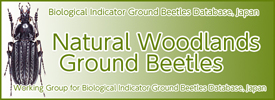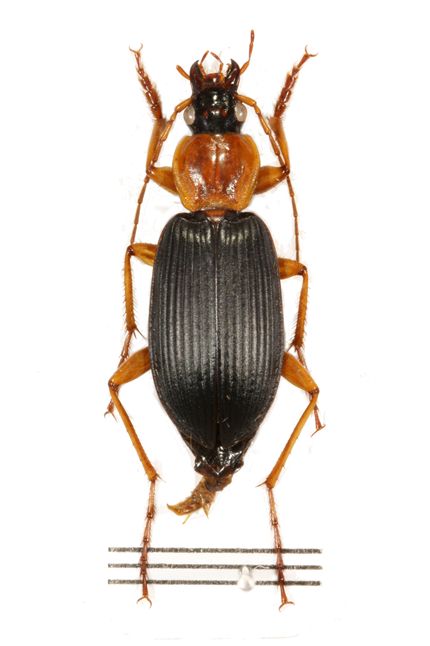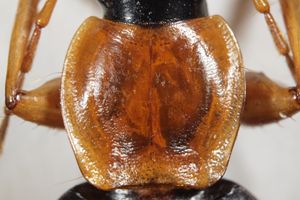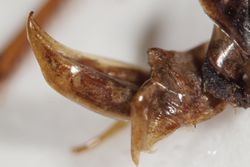| Ecology |
flatland (Ishitani 1996), They appear consolidated paddy environment or not (Lee et al. 2008), farm field (Habu 1963b, Okutani et al. 1971, Inoue 1981b), upland field (Inoue 1952m, Kasahara and Nishiyama 1990, Kimoto and Yasuda 1995, Hiramatsu 2004), grassland (Inoue 1952m, Kasahara and Nishiyama 1990), paddy field (Torii 1974, Yahiro et al. 1992), paddy levee (Inoue 1974c, Inoue 1975a, Inoue 1976a, Inoue 1977a, Inoue 1978c), firm field (Inoue 1979a), crop field (Inoue and Hanada 1979), apple orchard (Koyama and Yamada 1980), vineyard (Yano et al. 1989, Togashi and Ohbata 1995), bank (Togashi 1986, Aono 1987, Aono 1988), Pinus densiflora forest (East Japan Research Group of Carabid Beetles 1989), coppice forest (East Japan Research Group of Carabid Beetles 1989, Taniwaki et al. 2005, Matsumoto 2005, Kagawa 2008), forest adjoinig agroecosystems (Yahiro et al. 1990), waste land (Kasahara 1999), cultivated field (Kasahara 1999), grassland along mountain trail (Tanaka 1991b), grassland adjoining to paddy field (Tanaka 1991a, 1991b), meadow (Tanaka 1991a, 1991b, Ishitani et al. 1994), grassland in the riparian bank (Tanaka 1991b), grassland in the bank (Tanaka 1991a, 1991b), forest edge (Sunose 1992, Sunose and Kurosawa 1992, Kato 2000), slope of mound (Sunose 1992, Sunose and Kurosawa 1992), fallow field (Sunose 1992, Sunose and Kurosawa 1992, Kimoto and Yasuda 1995), pear orchard (Togashi and Ura 1994), fig orchard (Ishitani and Yano 1994, Ishitani 1996), paddy field (Kimoto and Yasuda 1995, Kagawa 2008, Lee et al. 2008, Lee and Ishii 2009), riverbed (Ishii et al. 1996, Ishitani 1996, Ishitani et al. 1997, Yamazaki et al. 1999, Lee and Ishii 2009, 2010), rape field (Ishitani 1996), field of residential area (Ishitani 1996), residential area (Ishitani 1996), beach (Shiyake 1999), forest (Siddiquee and Nakamura 2004, Suttiprapan and Nakamura 2007), vegetable field (Siddiquee and Nakamura 2004), field (Salah et al. 2004), grassland (Hori 2001, Taniwaki et al. 2005, Suzuki and Sakuratani 2010), broad leaved forest (Matsumoto 2005), urban forest (Fujita et al. 2008), pasture (Kagawa 2008), urban park (Lee and Ishii 2009), Satoyama forest (Lee and Ishii 2009, Suzuki and Sakuratani 2010), gravelly floodplain (Lee and Ishii 2010), larva (Habu and Sadanaga 1963, Kuwayama and Oshima 1964, Inoue 1952m, Inoue 1974b, Inoue 1981b, Ishitani 1996, Yamazaki et al. 1999), In our breeding room the adults oviposited from middle September to late November (Habu and Sadanaga 1963), from late August to middle September (Kuwayama and Oshima 1964), autumn (Tanaka 1991b, Yamazaki et al. 1999), from August to October (Ishitani 1996), carnivorous (Ishitani 1996), planthoppers (Nawa 1917, Nawa 1924, Kajiwara 1929), the larvae of Chilo suppressalis Walker (Nawa 1917), the larvae of Naranga aenescens Moore (Nawa 1917), the larvae of Barathra brassicae Linne (Takahashi 1917, Nawa 1920, Kuwayama et al. 1925, Kuwayama et al. 1964, Hori 1935, Izumi 1951), the larvae of Maybeetles (Takahashi 1917), cutworms (Takahishi 1917), the eggs and larvae of Paederus fuscipes Curtis (Kurosa 1958), the larvae of Pales pavida Meigen (Takaoka 1950), a dead fly (Fukuda 1949), Spodoptera litura Fabricius (Ito et al. 1972), eggs of Gryllotalpa orientalis (Inoue 1974a), the larvae of Scarabaeid beetles injurious to soy bean plants (Habu 1978e), to injure the seedling of Abies sachalinensis Fr. Schum., Picea jezoensis Carr., Larix leptolepis Gord., Populus sieboldii Miq., Betula spp. and Fraxinus mandshurica Rupr. var. japonica Maxim. (Inoue 1953), univoltine (Inoue 1952m), the adults liberate the roots of the nurseryplants from the soil and cause to wither them inasmuc as they move under the surface of nurseries (Uchida 1954), coming flying to the lights (Kuwayama and Oshima 1964, Inoue 1974b), in breeding season they often fly (Tanaka 1991a), they move to their preferring environment seasonally (Tanaka 1991a), nocturnal (Tanaka 1991a), collected by light trapping (Inoue 1974c, Inoue 1975a, Inoue 1976a, Inoue 1977a, Inoue 1978c, Inoue and Hanada 1979, Aono 1988, Yahiro 1997), proovigenic type (Ishitani 1996), he number of D. halensis captured in the chemical fertilizer plots (Salah et al. 2004) |
| Remarks |
Carabus halensis Schaller, 1783, Schrift. Naturf. Ges. Halle, 1: 317, pl. 1 (Europe: Germany) (Habu 1978e), Carabus halensis Schaller, Carabus flavicornis Fabricius, Dolichus flavicornis Fabricius, Dolichus flavicornis Fabricius vars. genuinus, maculatus, submaculatus, fuscus Letzner, Matulus nigripennis Gistel, Dolichus halensis Scaller, Dolichus flavicornis Fabricius vars. melanopterus, erythronotus Dalla Torre, Dolichus halensis Schaller vars. triangulatus Schilsky, Dolichus flavicornis Fabricius var. dispar Pic, Dolichns [!] halensis Scaller, Dolichns [!] collitheres [!] Bates, Dolichus collitheres [!] Bates, Dolichus Halensis Scaller, Dolichus rufithorax Jedlicka, Dolichus rufithorax Jedlicka ab. pictus Jedlicka, Dolichus halensis Schaller var. flavicornis Fabricius, Dolichus halensis Schaller vars. ruficollis, eohalensis Jeannel, Calathus (Dolichus) halensis Scaller, Calathus halensis Schaller (Habu 1978e) |
 |
| 






